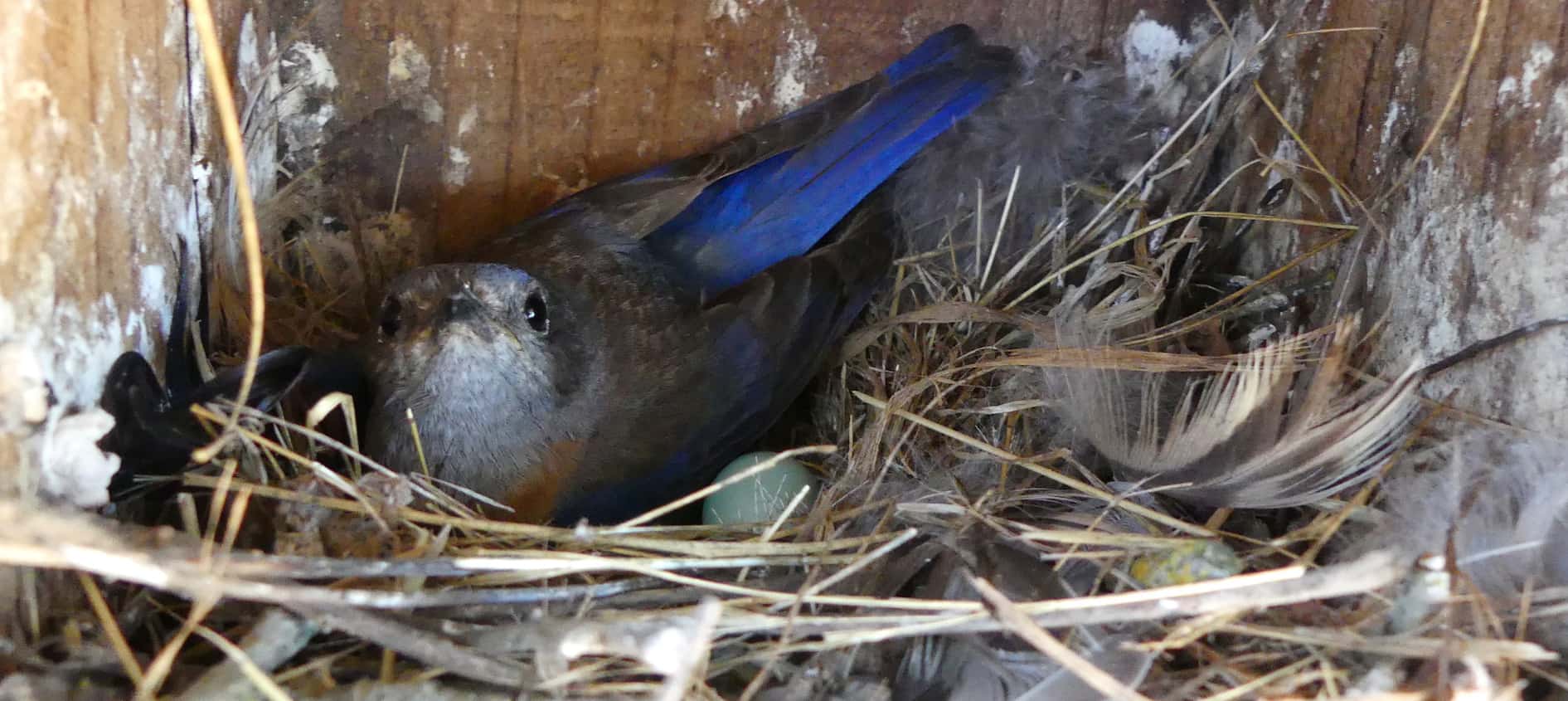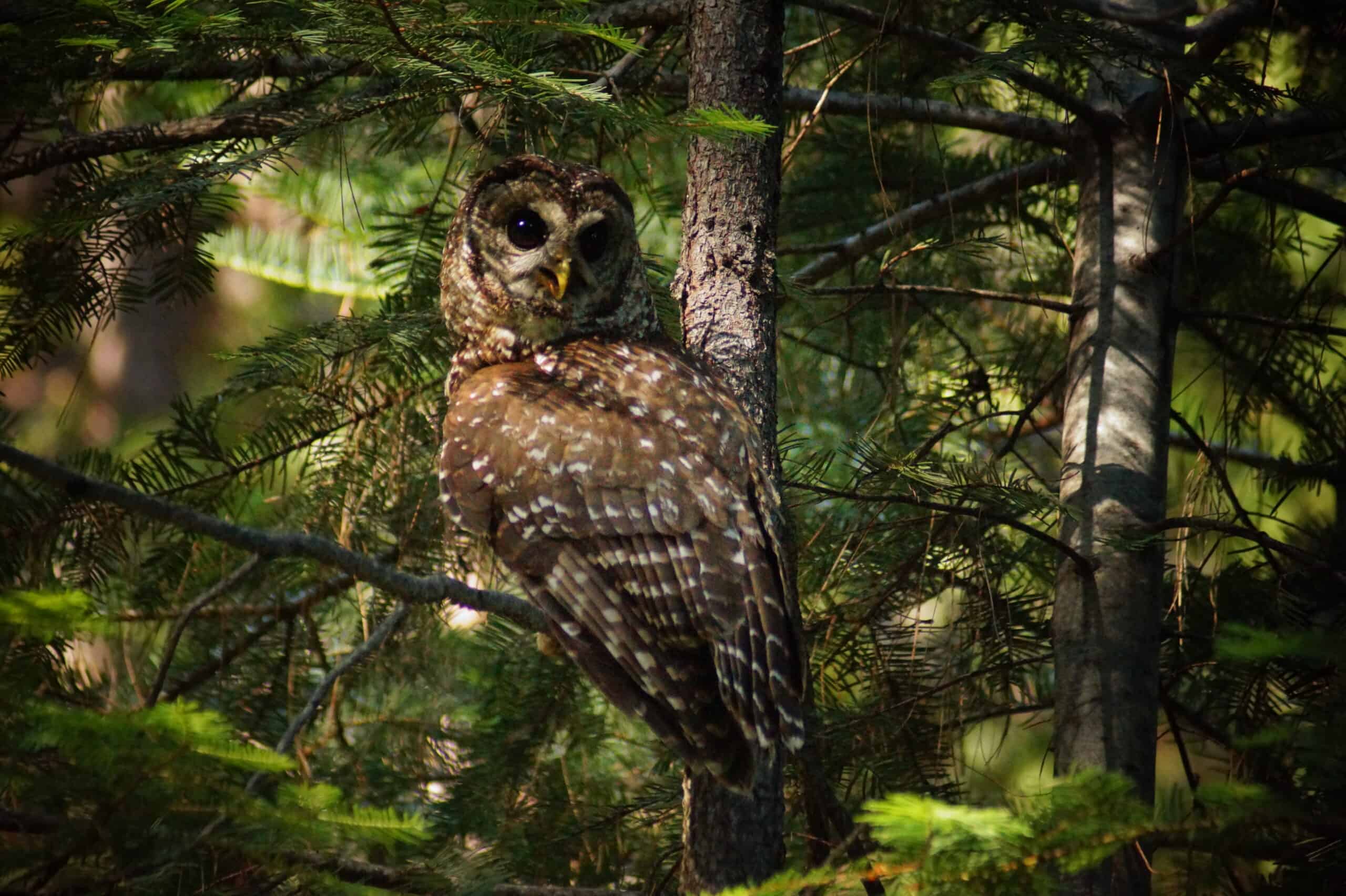Share this article
Wildlife Featured in this article
- house wrens
- tree swallows
- western bluebirds
- ash-throated flycatchers
Resources Featured in this article
In California, some songbirds face climate challenges
Precipitation and warm temperatures can cause reproductive issues for cavity-nesting songbirds
California’s Central Valley has been seeing a lot of variability in climate in recent years. Some years have been very hot. Others have been unusually cool. Some years have been dry. Others have been hit with flooding.
Scientists wondered how these variations would influence the ability of songbirds to breed—especially the ones that use cavities to nest, since much of their natural habitat is gone.
Luckily for them, there was already some data available to tap into. Researchers and undergraduate interns at the Museum of Wildlife and Fish Biology at UC Davis had been running a nest box highway project along Putah Creek for the past 20 years. Teams of individuals regularly monitor the nest boxes for nesting progress, check for eggs and nestlings and measure and band birds before they leave the nest.
“There’s this incredible treasure trove of data on this 50-kilometer stretch of the creek ranging from the coast, up into the hills across the Central Valley, and across a variety of different land use types,” said Jason Riggio, a postdoctoral scholar at the museum.

Riggio led a study published in Biological Conservation using 11 years of information collected from this dataset to see how precipitation and temperature influenced—and will continue to influence—cavity-nesting breeding birds.
Before conducting the research, the team wasn’t sure how these changes would impact the birds. But they did notice that the species using the nest boxes had changed. Historically, house wrens (Troglodytes aedon) mostly used the boxes, but then tree swallows (Tachycineta bicolor) and western bluebirds (Sialia mexicana) started to take over.
To find out if reproduction changed—and if climate was a driver—the team looked at daily temperature and precipitation records at nearby weather stations and compared it to information on nesting and reproduction.
The team found lower nesting success and fewer fledglings when temperatures during the nesting period were higher. While some species, like the more desert-adapted ash-throated flycatchers (Myiarchus cinerascens), may do better in a warming climate, that raises concerns for others that may have trouble finding optimal temperatures, Riggio said. In wet springs, some species, like house wrens, western bluebirds and tree swallows, had lower fledgling success and smaller chicks.
These changes are probably going to intensify in the future, Riggio said. “Max temperatures in the valley are expected to rise and rise faster than the average globally,” he said. “It’s already getting hotter and hotter more quickly than the global average.”

While precipitation amounts are expected to stay roughly the same between now and 2100, Riggio said, the timing of precipitation will likely change. Currently, the Central Valley receives most of its rain between October and February, but rainfall is expected to increase from March through May—when birds are breeding. That could cause mass die-offs at nests, he said, if chicks can’t regulate their temperatures and adults can’t go out and forage.
These findings can also provide some insight into what may be happening in other areas with Mediterranean climates. “This is just one piece in that puzzle,” he said. “There are other places that are already hot and expected to get hotter, which can be challenging for birds to deal with.”
As the planet continues to warm, nest boxes can make a difference for cavity-nesting birds, which have lost much of their habitat throughout their range, Riggio said.
“If there are really hot temperatures and wet springs making reproductive success lower, it’s better having boxes than nothing at all,” he said.
Header Image: An adult western bluebird incubates its eggs at UC Davis’s Russell Ranch in June 2017. Credit: Evelien de Greef/UC Davis








